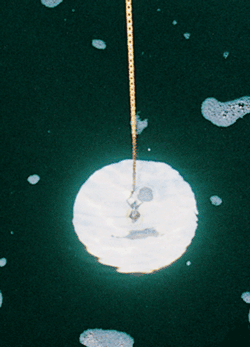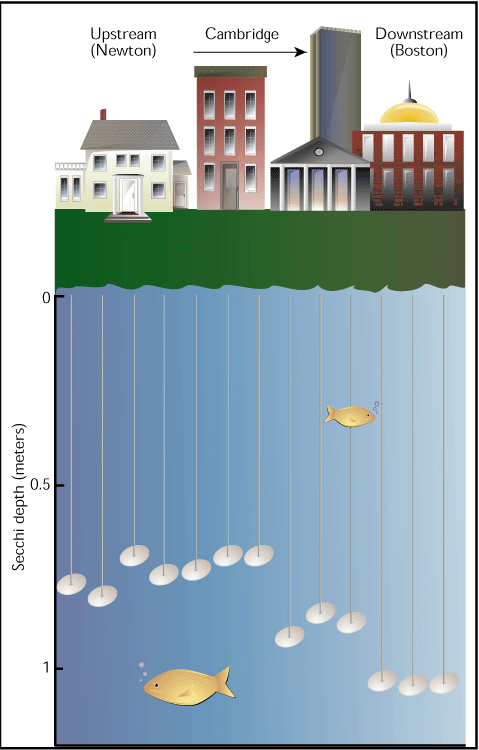| Home |
| Water System |
| Sewer System |
| Harbor and Bay |
| School Program |
| About MWRA |
| Doing Business with MWRA |
| Contact MWRA |
Boston Harbor
and Massachusetts Bay
Massachusetts
Water Resources Authority
| Archive |
Monitoring Water Clarity
 |
A
Secchi disk is used to measure water clarity in Boston Harbor |
Water clarity is one way people decide whether to swim at a harbor beach; it also determines how much light reaches the plants in the water. These plants, which include algae and seagrasses, are important to the ecology of the harbor.
Measurements of clarity in the harbor (and anecdotal observations by the public) indicate that water clarity has improved since the early '90s. One of the measurements that has shown this improvement is Secchi depth. This is the depth at which a white "Secchi" disk, when lowered into the water, is no longer visible.
Water clarity shows a west-to-east increasing gradient across the harbor. Water is more turbid toward the rivers and shallow margins of the harbor, and clearer (deeper Secchi depths) toward the mouth of the harbor and bay. Water in Dorchester Bay is naturally turbid, because it is a shallow area where sediments settle that are carried down by the Neponset River.
MWRA tests for water clarity by measuring Secchi depth in the rivers. Generally, the tributary rivers are not as clear as the harbor because they have higher concentrations of particulates and algae. The water clarity in the rivers has not changed significantly since monitoring began in 1992. See Comparison of clarity in Boston Harbor and Rivers.
The Charles River has an interesting pattern of water clarity: the water is more clear in the urbanized basin than it is upstream. As the river slows and widens through Cambridge and Boston, the rate of flow decreases, allowing solids to settle out. As a result, water clarity (Secchi depth) increases downstream.

Water Clarity improves downstream in the Charles River
Chlorophyll concentrations are typically higher in the rivers than in the harbor, because nutrient levels are higher in rivers. Also, algae levels are at their highest in the summertime. The Mystic and Charles rivers have the highest amounts of algae.
Seasonal Levels of Chlorophyll in the Rivers and Harbor
Rivers have higher chlorophyll levels than the harbor, but both ecosystems are subject to dramatic seasonal fluctuations. Chlorophyll levels are high in the summer when the light is intense. Both the Mystic and Charles show signs of eutrophication, with high average chlorophyll due to poor flushing and high nutrient inputs. The Neponset has the lowest chlorophyll of all the rivers, probably due to a relatively natural river flow and lower nutrient inputs.